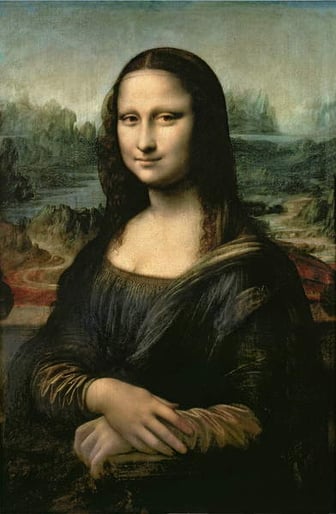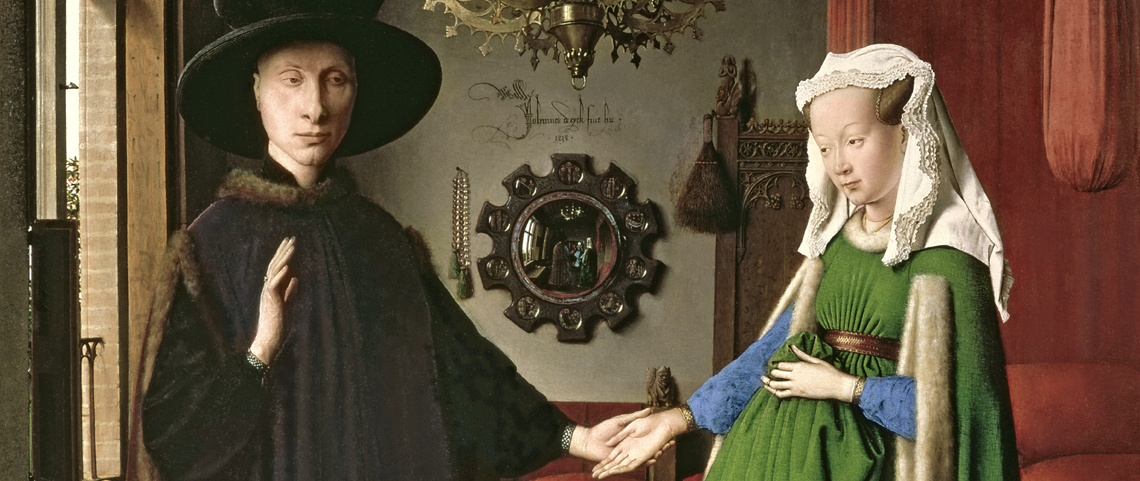
Eleven must-see Renaissance Paintings
The renaissance period was a period of European cultural, artistic and economic rebirth following the Middle Ages. Taking place from the 14th century to the 17th century, the renaissance promoted the rediscovery of classical philosophy, literature and art. There is the Italian renaissance concerned with strict styles and the northern renaissance, less concerned with aspects of reality. With such a broad spectrum of artwork from this period, it can be daunting knowing where to begin. Here’s our selection of 11 Renaissance paintings you should know!
Leonardo da Vinci
Mona Lisa 1503-6, oil on panel
Located in the Louvre Museum, Paris, France.
This painting is one of the most valued pieces of art work in the world, but it is shrouded in mystery. Known primarily for Lisa’s enigmatic expression, the identity of the woman in the artwork has been speculated for many years. The environment in which she sits has also caused heated debate, and there are theories that the painting was originally larger: allegedly, more of the pillars (the bottoms of which can just be made out near the sides of the painting) were visible. Certainly, this is the case in several faux versions of the painting, photographs of which can be seen online. The Mona Lisa is one of the most well-recognised artworks ever produced, has been the focus of endless documentaries and films, and it will probably never leave the Louvre again.
Jan Van Eyck
Located in the National Gallery, London, England
The Arnolfini portrait is a northern renaissance painting by Flemish painter Jan Van Eyck. One theory was that this painting was a commissioned portrait by the Arnolfini merchants, who were living in Bruges at the time. Another possible theory is that it stands as a memorial to Giovanni Arnolfini’s wife: the right hand side of the mirror depicted in the background shows the scene of Christ’s passion.
Speaking of the mirror, this painting is quite remarkable for its inclusion. The position of the artist and canvas is shown reflected in the mirror, causing the viewer to see the area immediately behind where the artist would have been sat in addition to what has been presented before the artist for his artwork. The viewer is conscious of the whole room as its own space and not just what is shown on the canvas.
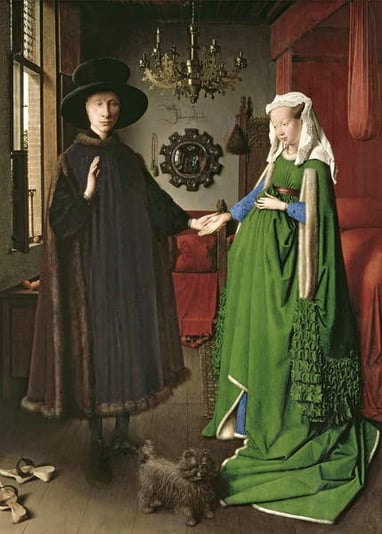
The Portrait of Giovanni Arnolfini and his Wife Giovanna Cenami (The Arnolfini Marriage) 1434 (oil on panel), Jan van Eyck (c.1390-1441) / National Gallery, London, UK
Albrecht Durer
Water-colour on paper
Located in Graphische Sammlung Albertina, Vienna Austria
This piece belongs to the German Renaissance. Durer, known for his scientific and artistic mind created this naturalistic, detailed study of an animal. Prior to Durer’s work, wild animals had rarely been seen as a necessary focus of any artistic piece. But Durer not only drew focus on animals – he isolated them on white backgrounds, taking great care to reproduce their appearances as closely as possible.
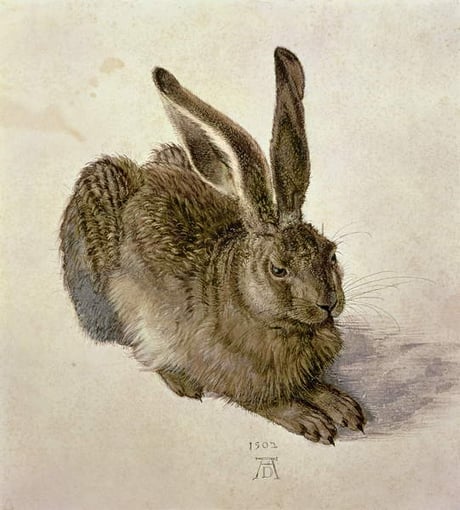
Hare, 1502 (w/c on paper), Albrecht Dürer or Duerer (1471-1528) / Graphische Sammlung Albertina, Vienna, Austria
Jan Van Eyck
1432
Detail of God the father, northern renaissance. God is depicted here to be a saviour through the pose, the divine qualities of jewels and gold exterior on his crown. This differs to traditional medieval depictions of a more Vengeful God. The positioning of god in this image puts him in a human form in a position not unlike typical Jesus portraits. In this regard, and in its vibrancy of colour, it is unique.

Detail of God the Father, central panel of the Ghent Altarpiece, 1432 (oil on panel) , Jan van Eyck, Hubert (c.1370-1426) & (1390-1441) / St. Bavo Cathedral, Ghent, Belgium / © Lukas – Art in Flanders VZW
5. Botticelli
1485
This painting, one of the most iconic paintings ever, belongs to the Italian renaissance. It depicts the goddess Venus arriving at the shore after her birth, nude, on a giant half-clamshell. The whole painting is very large, and as it depicts mythological figures – as opposed to figures of real people – it was virtually unprecedented in this period. The focus on the nude female form is also remarkable.
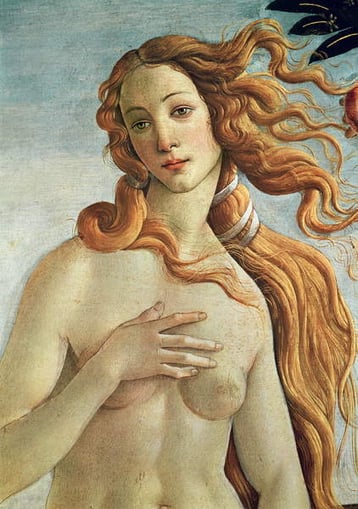
Venus, detail from The Birth of Venus, c.1485 (tempera on canvas) , Sandro Botticelli, Alessandro di Mariano di Vanni Filipepi) (1444/5-1510) / Galleria degli Uffizi, Florence, Tuscany, Italy
The School of Athens, from the Stanza della Segnatura
1510-11
This fresco is one of Raphael’s most well-known, and for good reason. Notable for its sheer scale and number of figures, this artwork is rightfully recognised as a renaissance masterpiece. The artwork belongs to the Italian Renaissance and formed one of Raphael’s commissions to decorate rooms now known as the Stanze di Raffaello in the Apostolic Palace in the Vatican. The two central figures, at the vanishing point of the artwork, are believed to be Plato and his student, Aristotle. There is an exceptional level of detail in this work and it is spread over four segements.
Incredibly, the cartoon, or preliminary study for the painting still exists and is held in the Pinacoteca Ambrosiana in Milan. Courtesy of Ambrosiana, Bridgeman Images have exclusive rights to brand new photography of these preliminary studies – have you seen them yet?
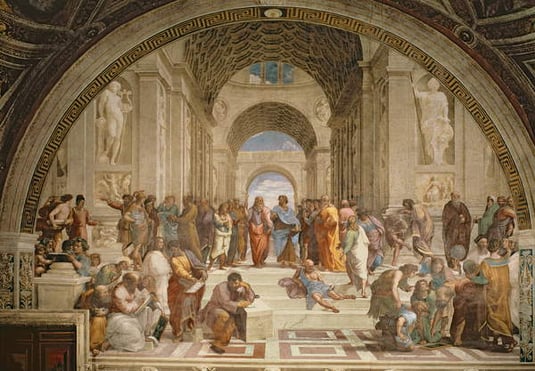
School of Athens, from the Stanza della Segnatura, 1510-11 (fresco), Raphael (Raffaello Sanzio of Urbino) (1483-1520) / Vatican Museums and Galleries, Vatican City
1495-97
Located in Santa Maria delle Grazie, Milan, Italy
This work supposedly depicts Jesus’ final meal with his disciples before being crucified. There are several theories as to the exact location of where the event in the artwork took place, though it is rumoured to still exist to this day. Because of its religious significance the artwork is one of the most well known in the world, and is a textbook example of Renaissance artwork.
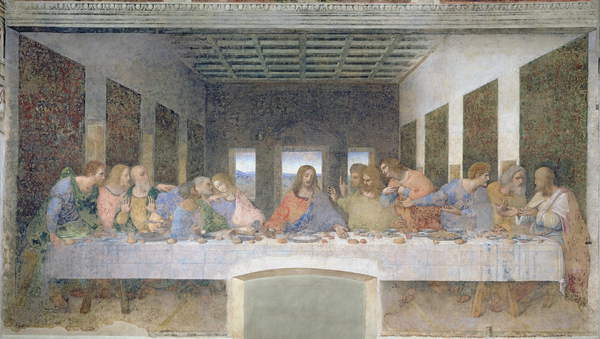
The Last Supper, 1495-97 (fresco) (post restoration), Leonardo da Vinci, (1452-1519) / Santa Maria delle Grazie, Milan, Italy
8. Giorgio Vasari and Zuccari
Italy, Florence. Dome of Brunelleschi
Last Judgement
This is a 16th century renaissance modern age painting, showcasing interior detail of a cathedral dome. This scene depicts the eternal judgement by God on all humanity. Eight vertical segments are fragmented, representing theological pattern – including a series of Saints and Elect and an angelic chorus. At the top in the centre of the dome there is a false central lantern, which is surrounded by 24 respected men from the Apocalypse.

Italy. Florence. Dome of Brunelleschi. Last Judgement, by Giorgio Vasari and Zuccari., Giorgio Vasari, (1511-74) / Duomo, Florence, Tuscany, Italy / Tarker
9. Michalangelo Merisi da Caravaggio
1599
The calling of St Andrews also belongs to the 16th century and the Italian renaissance. There is a strong use of shadow through the technique of Chiaroscuro, dramatising the scene of the martrydom of Saint Andrew. Christ is pictured gesturing ahead, calling the two brothers, Peter and Andrew to follow him to be his disciples. Peter and Andrew, through the use of realism are expressed as frightened, uncertain and surprised.
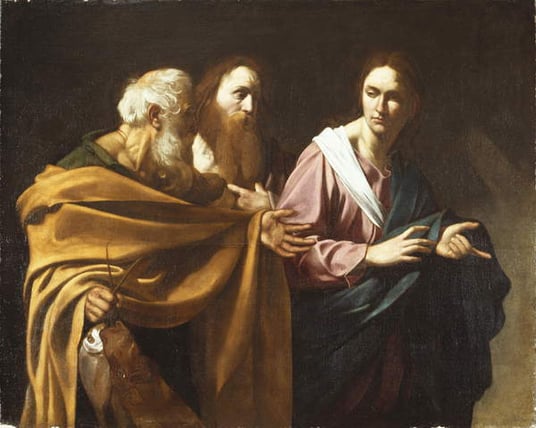
The Calling of SS. Peter and Andrew, c.1602-04 (oil on canvas), Michelangelo Merisi da Caravaggio, (1571-1610) / Royal Collection Trust © Her Majesty Queen Elizabeth II, 2
10. Giovanni Bellini
1501
A must see renaissance landscape painting featuring architectural features such as the cathedral of Vicenza and a bridge portioning the centre and nature in pure quality. To the left of the painting there is a farm building and water mill all painted in tranquillity. This 16th century naturalistic tempera painting, with its variety of buildings, natural forms and colours, is a must see.

Crucifixion (Crocifissione), Giovanni Bellini, 1501 – 1503, 16th Century, tempera on board, 81 x 49 cm, Bellini, Giovanni (c.1430-1516) / Mondadori Portfolio/Electa/Marcello Bertoni
11. Claude Lorrain
1674
This is a French renaissance painting with baroque themes – dark and light elements are exaggerated. A landscape of figures and boats is depicted. There is immense modern detail in this work, though the painting is almost theatrical and provides a stage-like view where there is an effect of luminosity and space through Bellini’s exceptional skill. Perfection of proportions, texture and perspective is shown through this ideal high baroque landscape.
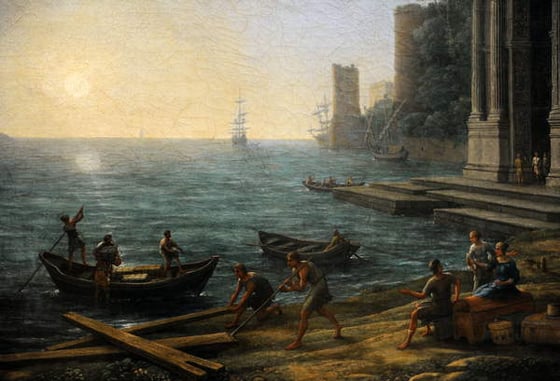
Seaport at sunrise, 1674, by Claude Lorrain (1600-1682)., Claude Lorrain (Claude Gellee) (1600-82) / Alte Pinakothek, Munich, Germany / Tarker

